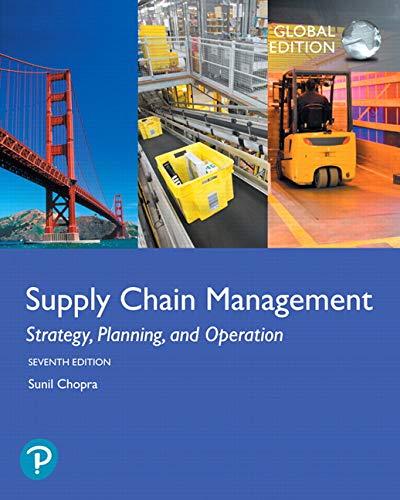In 2011, there were more than 4.6 billion telephone users worldwide. Until 2010, Nokia was the market
Question:
In 2011, there were more than 4.6 billion telephone users worldwide. Until 2010, Nokia was the market leader with 29 percent of total market share but now Apple and Samsung compete for first place in terms of revenue. In 2010, 1.6 billion cell phones were sold, a net increase of 37 percent from 2009, and 250 million handsets were delivered in the first quarter of 2011. Nokia, a Finish company, originated in the mid-19th century as a paper manufacturer. The conglomerate expanded into the electronics sector in the 1960s and finally into the mobile manufacturing business in the 1980s. Over the past 30 years, the industrial outsourcing trend has stretched manufacturing facilities from in-house production of almost all components to global sourcing, keeping in house only the design and the assembling of final products.
With customers all over the world and suppliers from the United States to China, Nokia faces challenges in the operation of its supply chain and sometimes has some difficult choices to make.
Global Supply Chain Challenges In 2000, in the facility of a New Mexico subcontractor of integrated circuits, a fire started but was rapidly managed. Integrated components plants require highly sterilized environments, and the fire plus the intervention compromised several months of integrated circuits supply to Nokia. Researchers at the Massachusetts Institute of Technology calculated that when publicly listed companies announce disruption in their supply chains, share prices drop on average 8 percent and take a long time to recover. In addition to the financial element, the rest of the supply chain has to support the strain from replacing a supplier in a minimum amount of time. Furthermore, with wide product ranges and multiplicity of parts, the challenges are growing every year. The lean concept, when pushed to the extreme, could also be a cause of supply chain rupture when an issue arises. Academics and consultants agree that these issues can be overcome, if not avoided, thanks to early and constant communication.
Nokia has to decide to either stay with this integrated circuit supplier or source an alternative plant in China. The expected cost of sourcing a new supplier and implementing the necessary quality assurance procedures is estimated at $2 million. Once in place, for the three following years, this partnership has a 50 percent chance of yielding $100,000 in savings and a 50 percent chance that it will yield $150,000. For this scenario, the discount rate is 3 percent.
The other alternative is to stay with its supplier in New Mexico. The cost of the damage to Nokia’s supply chain is estimated at $1.5 million. Supply chain risk assessors have estimated that there is a 60 percent chance the New Mexico’s supplier will not yield any additional savings for the three following years and a 40 percent chance that it will result in a yearly $50,000 loss (additional cost) for each of the three following years. For this scenario, the discount rate is 9 percent.
Global Supply Chains Environment Various suppliers are involved with Nokia globally. The supply chain environment is by nature complex and uncertain. Supply chain designers have started to implement robust communication systems coupled with geo-localization devices and RFID technologies. These technologies enable Nokia to track and monitor shipments’ progress around the world, thereby accurately managing its inventory levels. IT is the answer to efficiently managing complex global supply chains; however, IT systems require high levels of standardization from the suppliers’ perspective, forcing them to adapt to systems with which they are not necessarily familiar. Thus, this view of standardizing techniques is recognized as a problem that prevents the implementation of true flexibility. The new view of the supply chain is taking into account the old parameters and adding a new one. A flexible supply chain should include systems technology, infrastructures, and human behavior.
The Global Supply Chains of the Future: Dynamic Alignment
The concept of dynamic alignment is often illustrated with cyclists in a team or flocks of geese in V formation. Both examples have the same purpose: a team dynamic to reduce drag and efforts. The alignments are made by each individual rather than by a command center. This innovative view on supply chain dynamics relies on human behavior. Dynamic alignment is the ultimate view of supply chains driven by people power. It has started by aligning the company to the customers’ view, and the idea is simply being rolled out now to a new level.
Questions
1. Draw a decision tree illustrating Nokia’s alternatives between the two suppliers (the existing one and the perspective one in China)and the related sequences.
2. Calculate the NPV for both suppliers. Compare them and select the appropriate supplier.
3. Illustrate the benefits of evolving toward dynamic alignment compared to standardization in supply chains involving hundreds of suppliers.
Step by Step Answer:

Supply Chain Management Strategy Planning And Operation
ISBN: 9781292257891
7th Global Edition
Authors: Sunil Chopra





